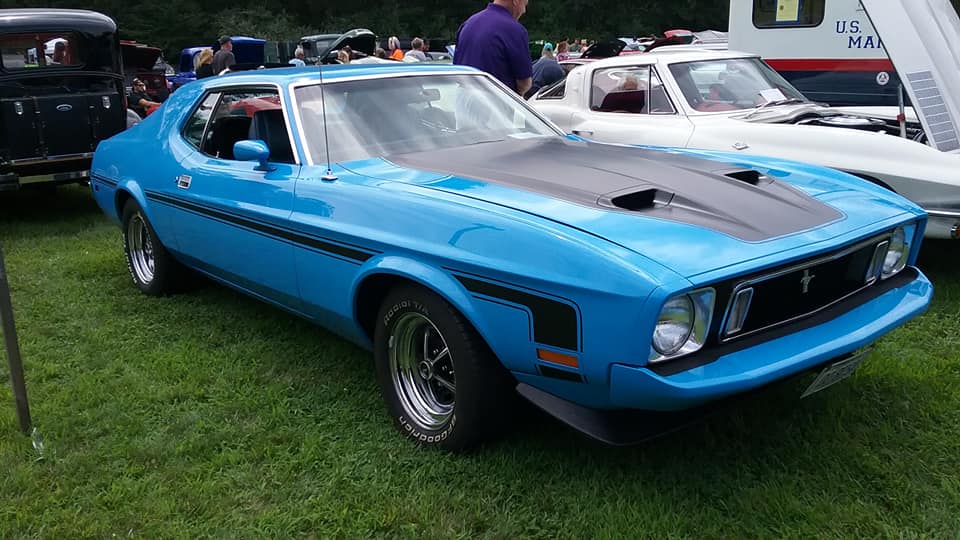Car: Ford Mustang Coupe
Year: 1973
What makes it special: The Mustang was revised in 1971, with the model growing in size, gaining 3 inches in width in order to accommodate Ford’s big block 429 cu in V8 without need for an extensive suspension redesign. Three body styles offered. A Hardtop available in base or Grande trim, a Sportsroof available in base or Mach 1 trim, and convertible with no specific trim packages available. The new 1971 hardtop featured a prominent “Tunnelback” rear window design with flowing rear pillars, a completion of the styling exercise of the outgoing model.
What made it famous: The 1973 Ford Mustang brought the pony car into the final model year of fourth generation. The federal government now required front bumpers to sustain low-speed shunts without damage. Body-color bumpers were now standard for all models and stuck out only a little more. The bumpers absorbed energy through an I-beam mounting bar with a box-section bracket attached to two longitudinal rubber blocks that gave way on impact, then bounced back to original position. All Mustang models had their sport lamps re-purposed as turn signals, as the new bumper covered part of the front valance. Both a Mach 1 and base grille were offered, with differing insert patterns. All 1973 Ford Mustang engines got a revamped emissions-control system with positive crankcase ventilation and exhaust-gas recirculation. The EGR routed gases from the exhaust manifold through a vacuum valve into the carburetor to be diluted by the incoming fuel/air mixture. This permitted leaner carburetor settings but also diminished horsepower except on the 302 V8 and 250 Inline-six. The 2-barrel 351 sunk to 173 net horsepower, the 4-barrel version to 259. The 351 HO got the heave-ho, a victim of weak demand and too much required finagling to satisfy the federal air marshals. The 4-speed manual was now limited to the 4V 351, and automatic was mandatory with the 2-barrel unit. Power front-disc brakes were newly standard with either 351 V8 and for all convertibles, and both disc and drum brakes were enlarged for cars without power assist.
Why I would want one: It’s the last year of the “Big” Mustang, which is receiving more popularity in recent years.
Fun fact: The ’73 Mustang was still its hefty self, but somehow it picked up some sales, perhaps because Ford announced that it would not return the following year.

